Durante este mes de agosto hemos estado de mantenimiento en el Templo de Gaut, que es el vuestro, la disposición del santuario expuesto a las inclemencias y rigores del duro clima estepario hacen necesarias y vitales estas obras periódicas
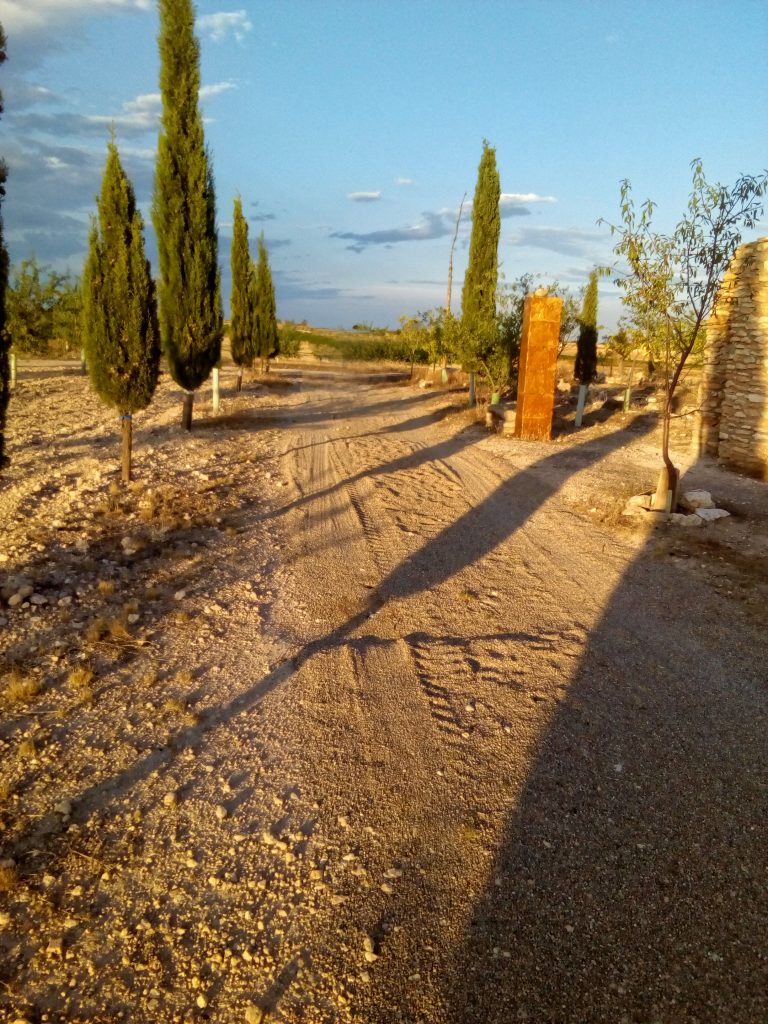
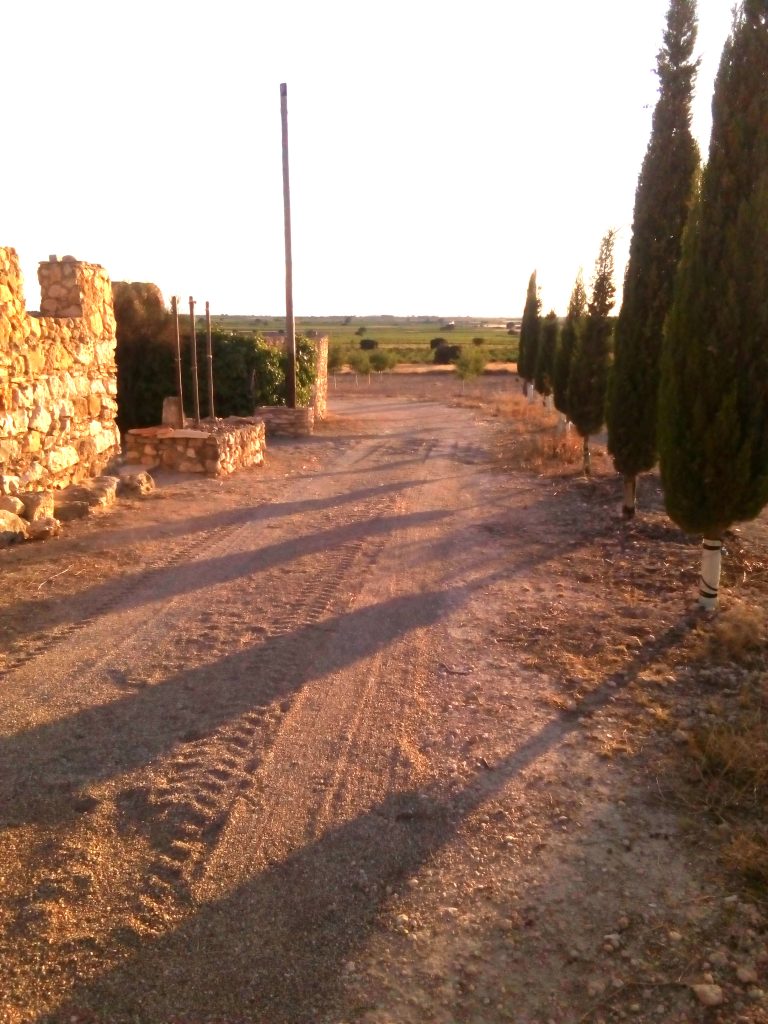
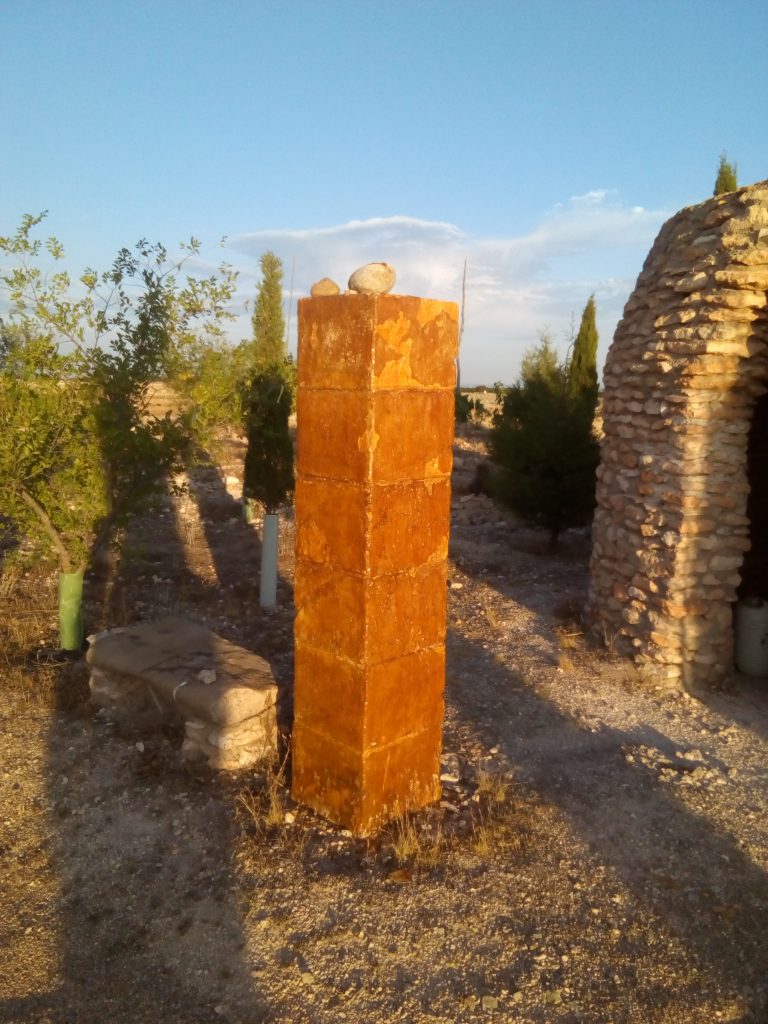
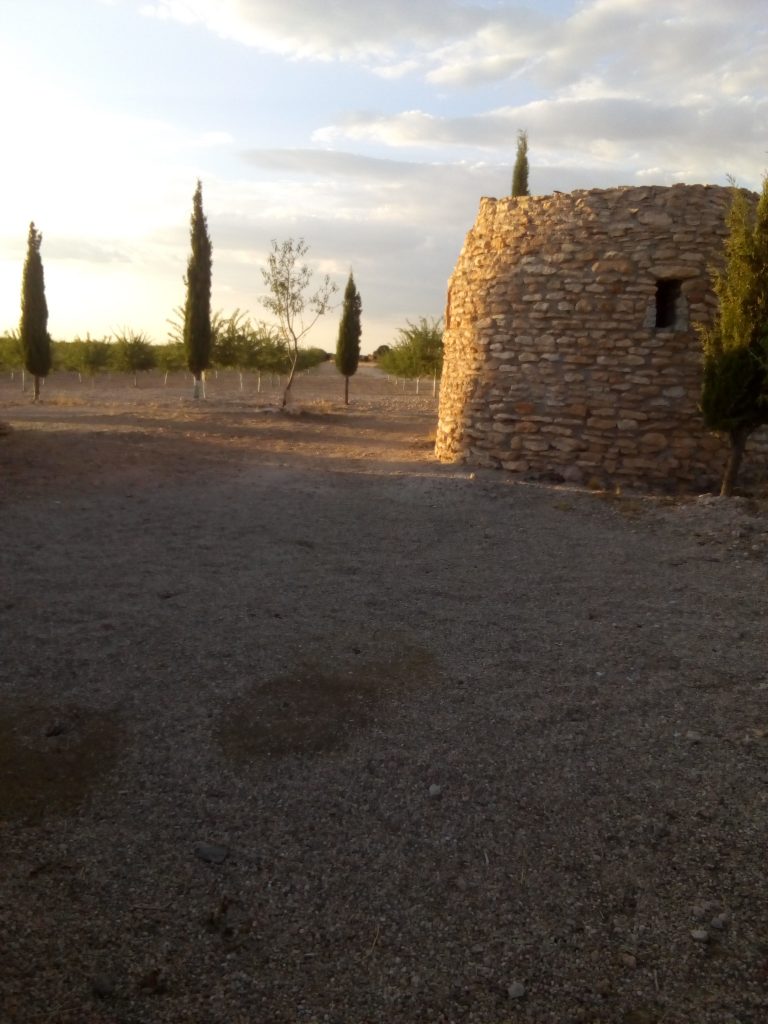
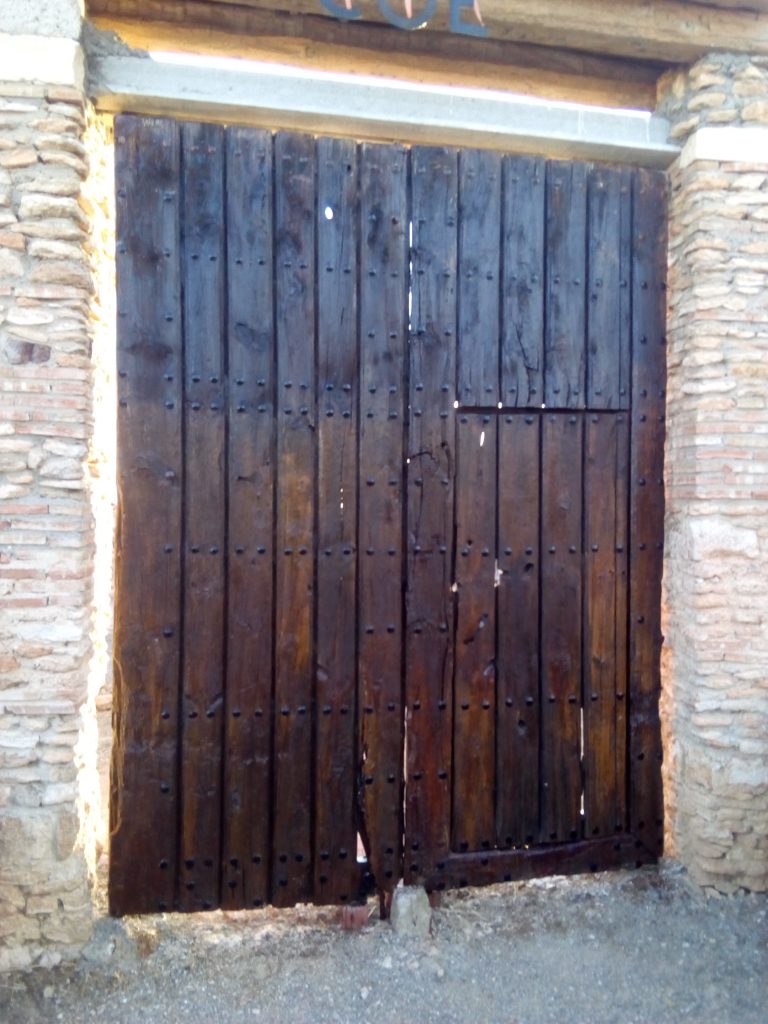
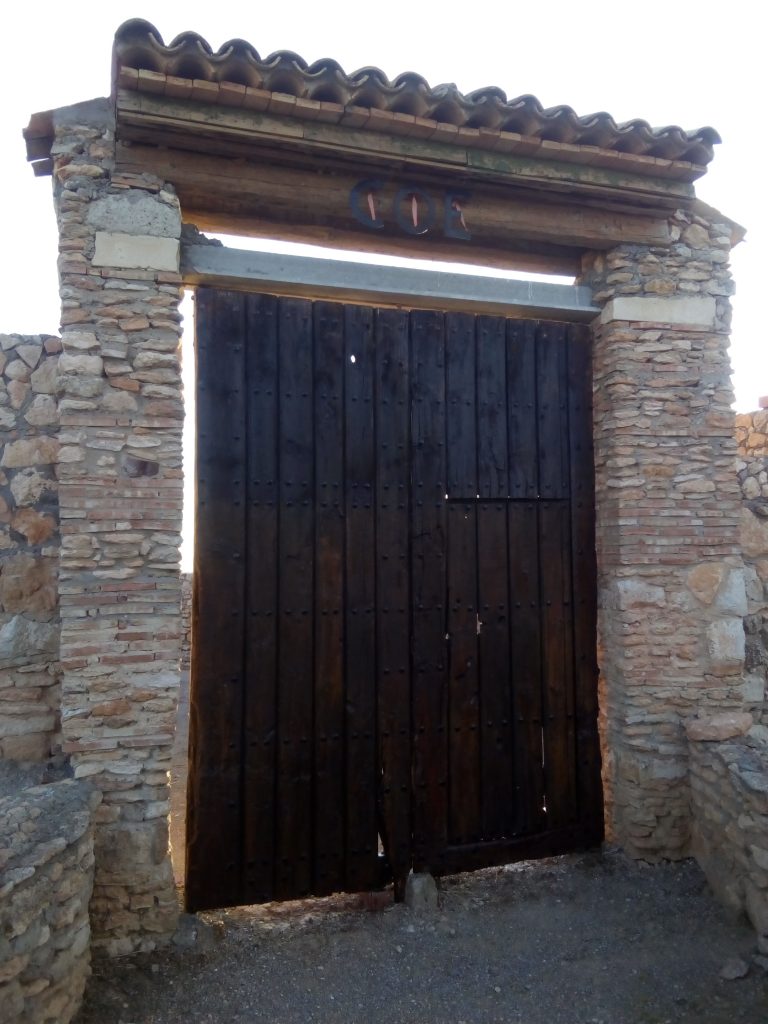
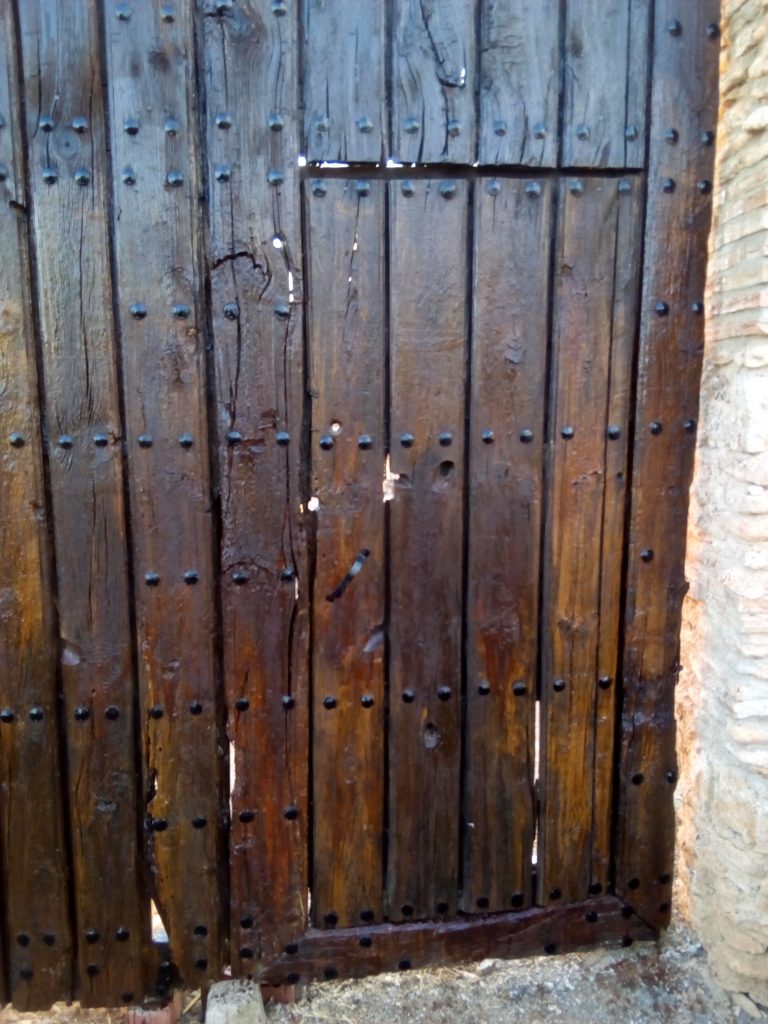
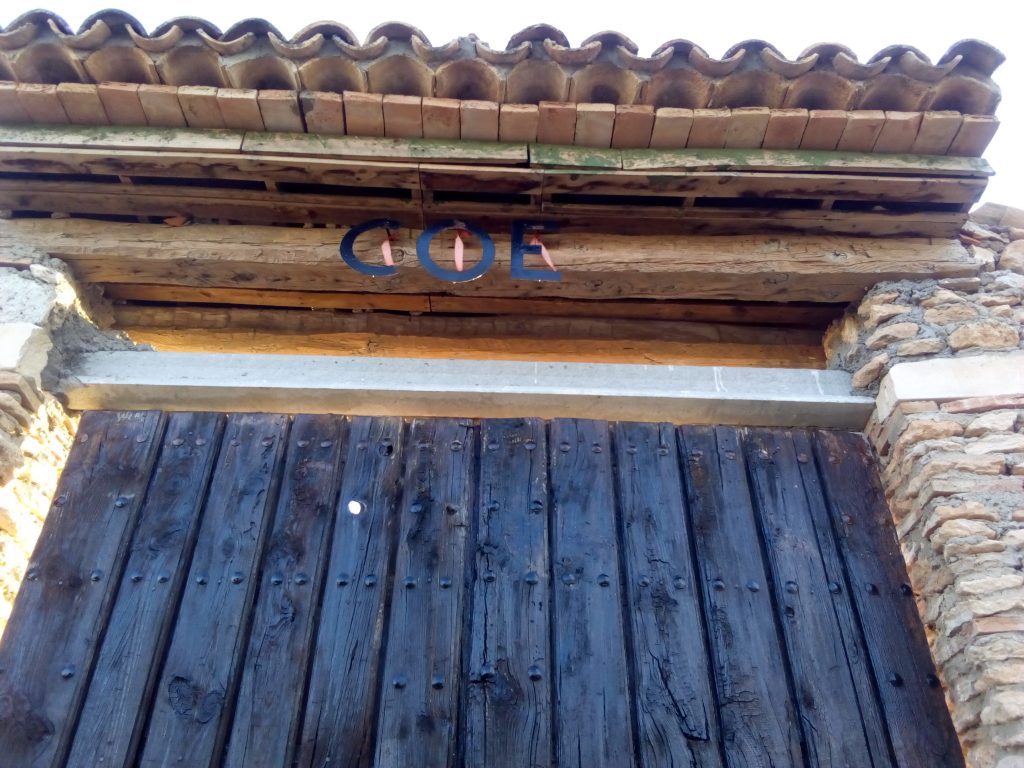
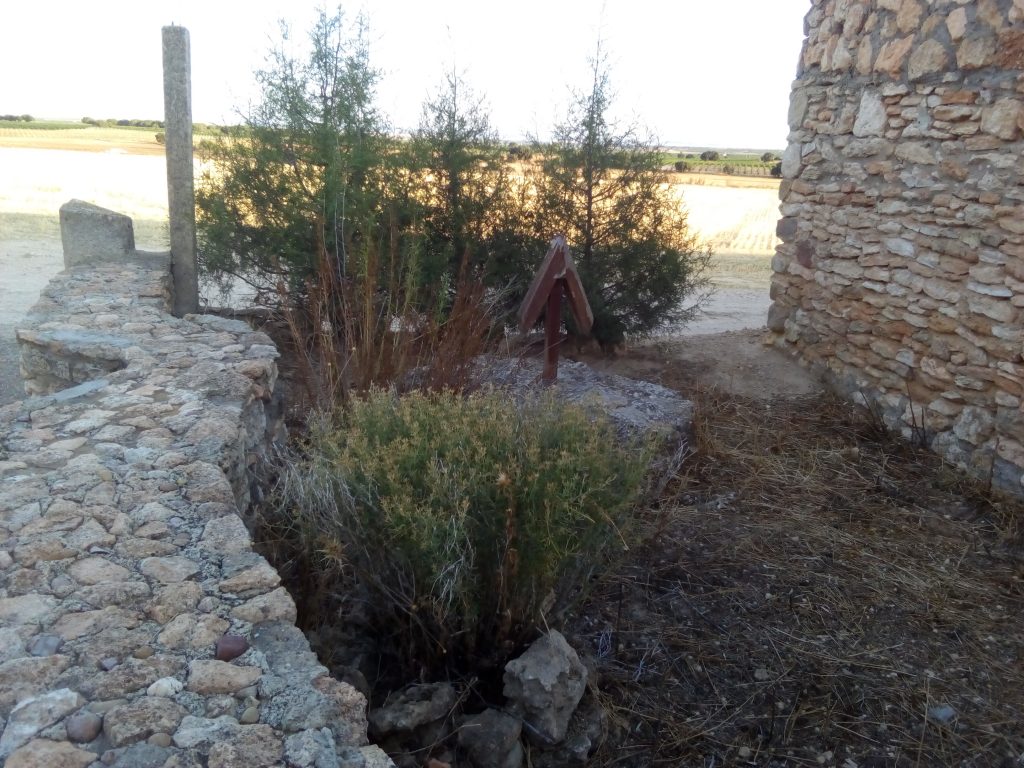
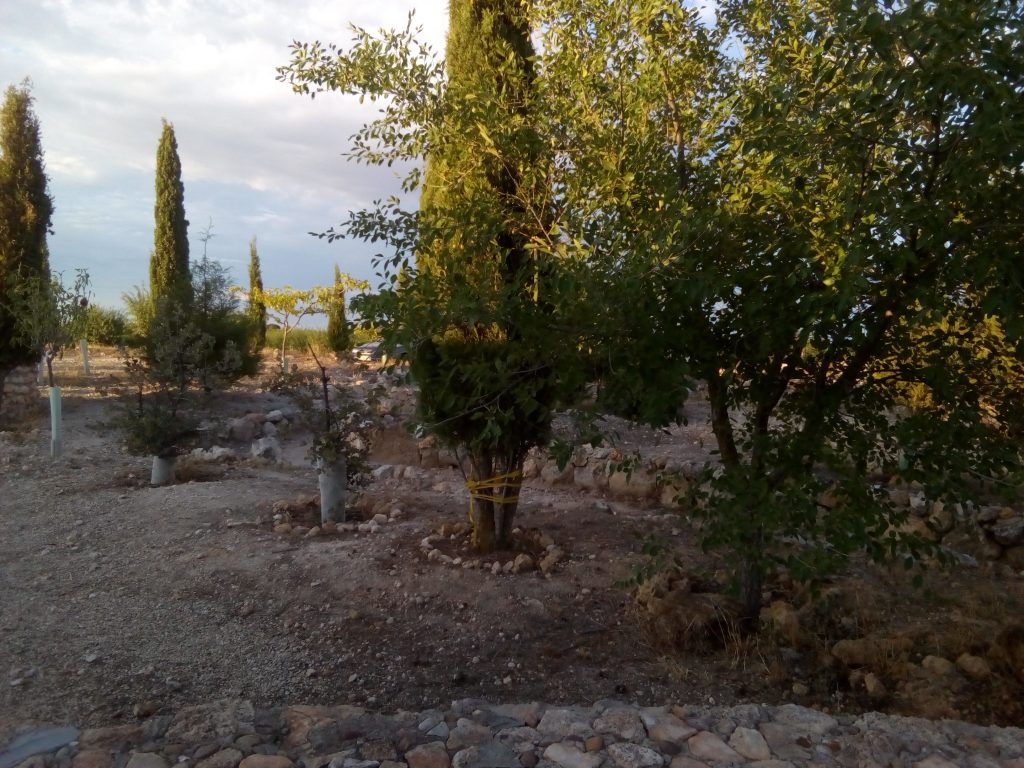
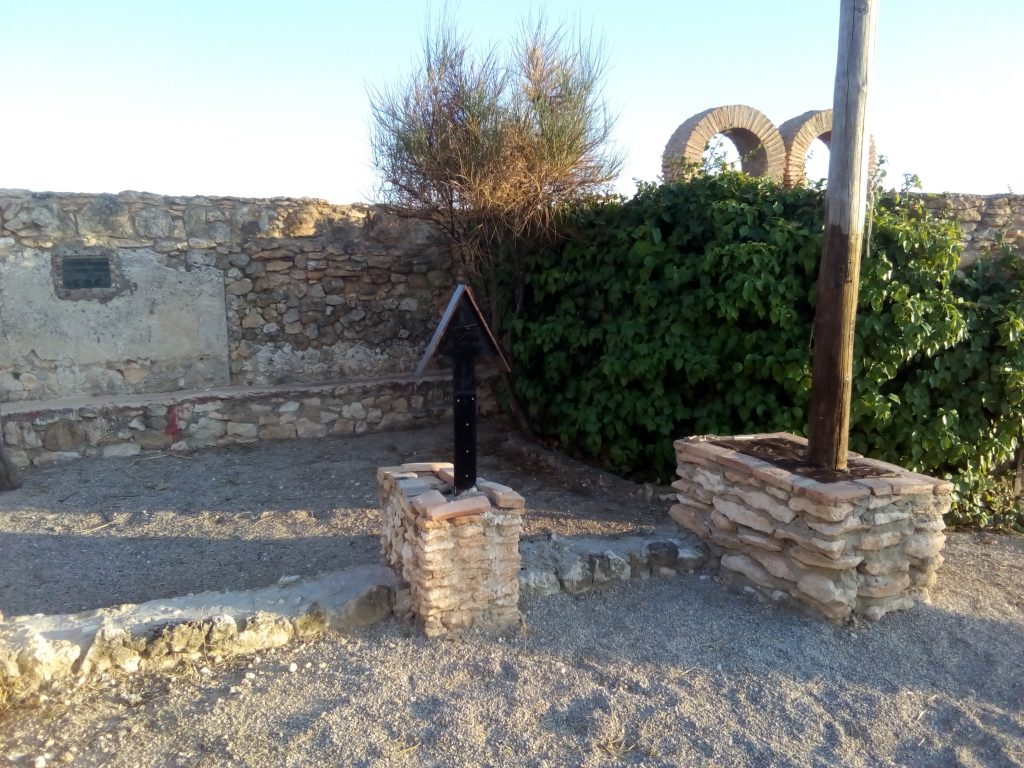
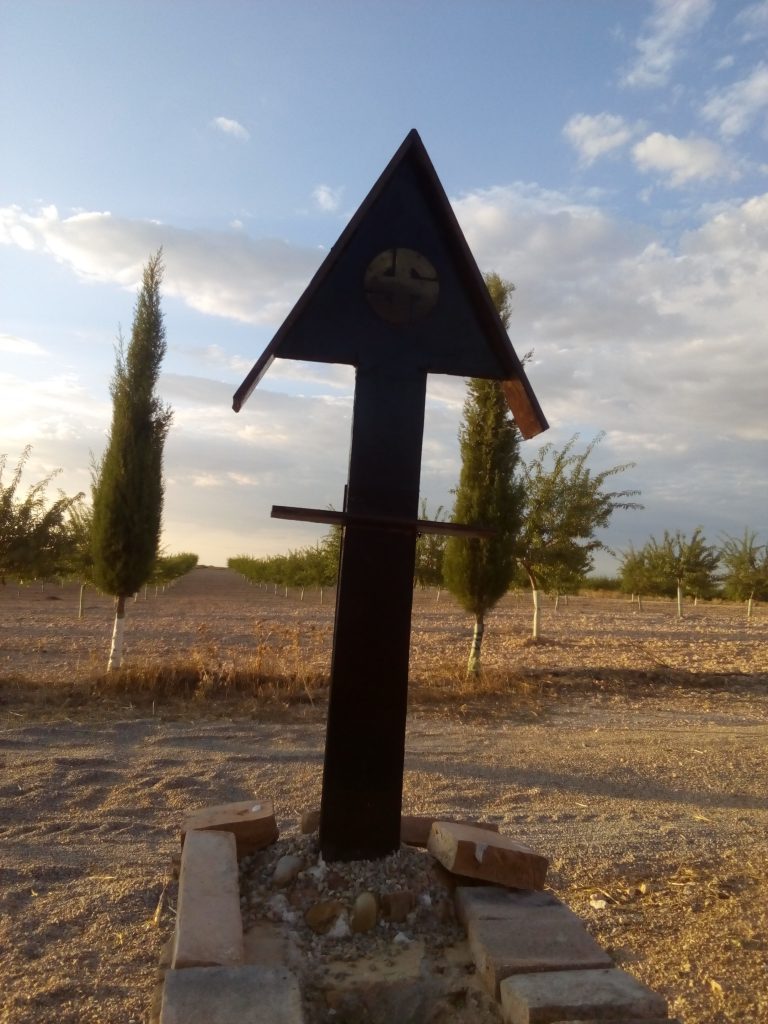
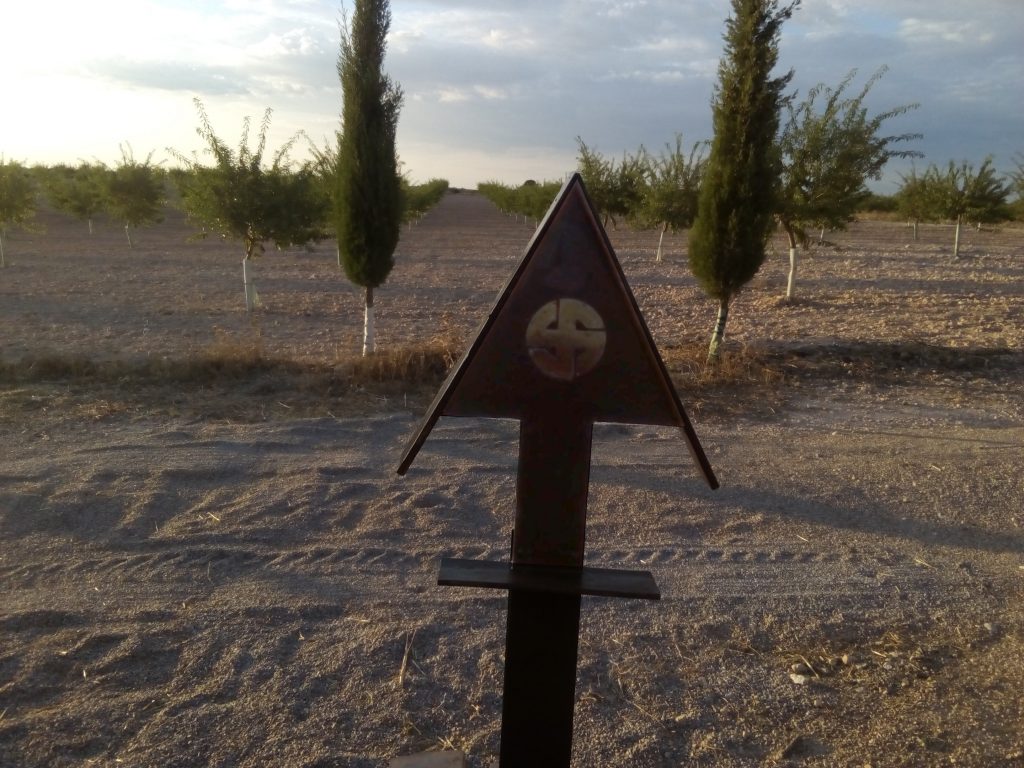
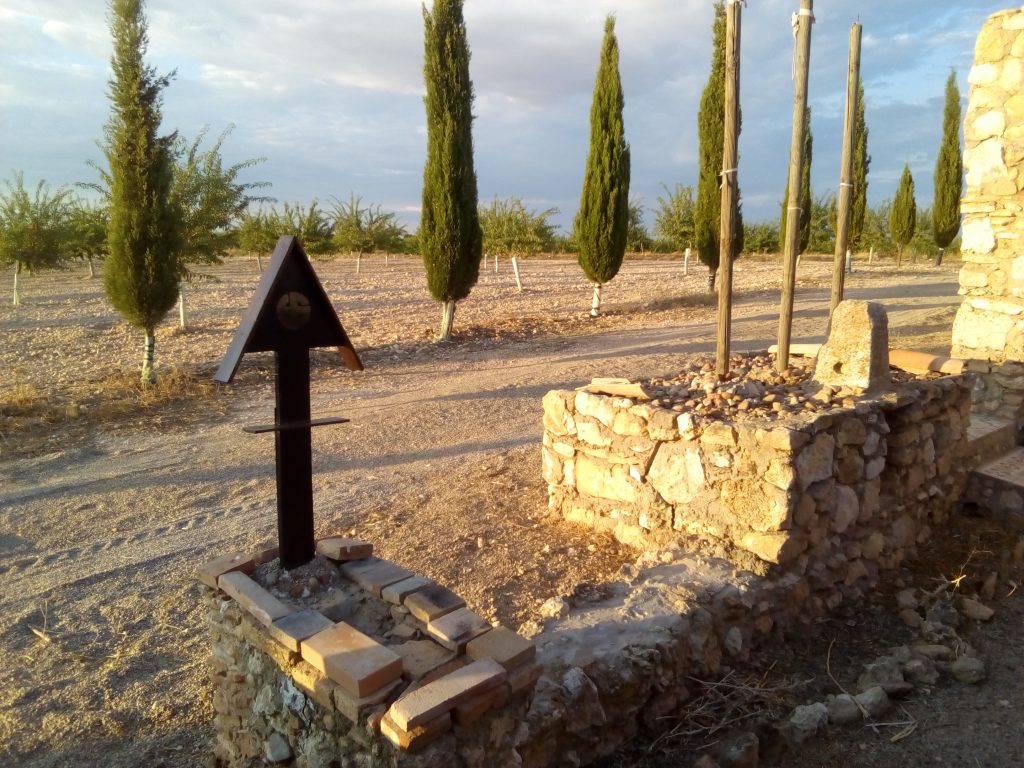
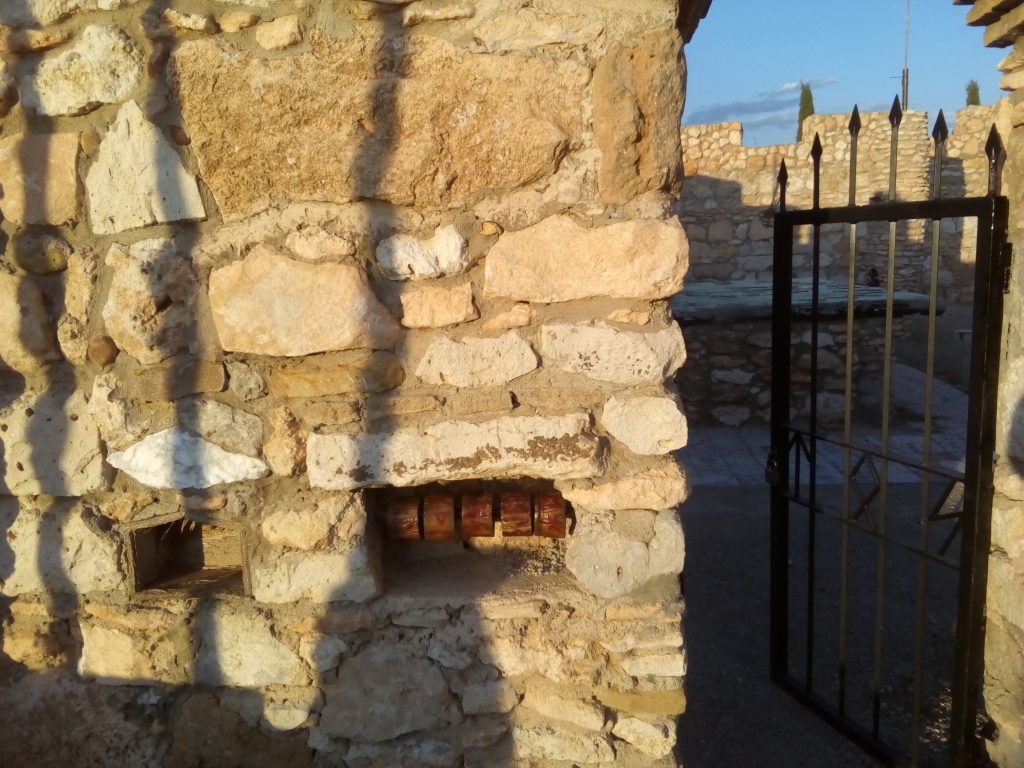
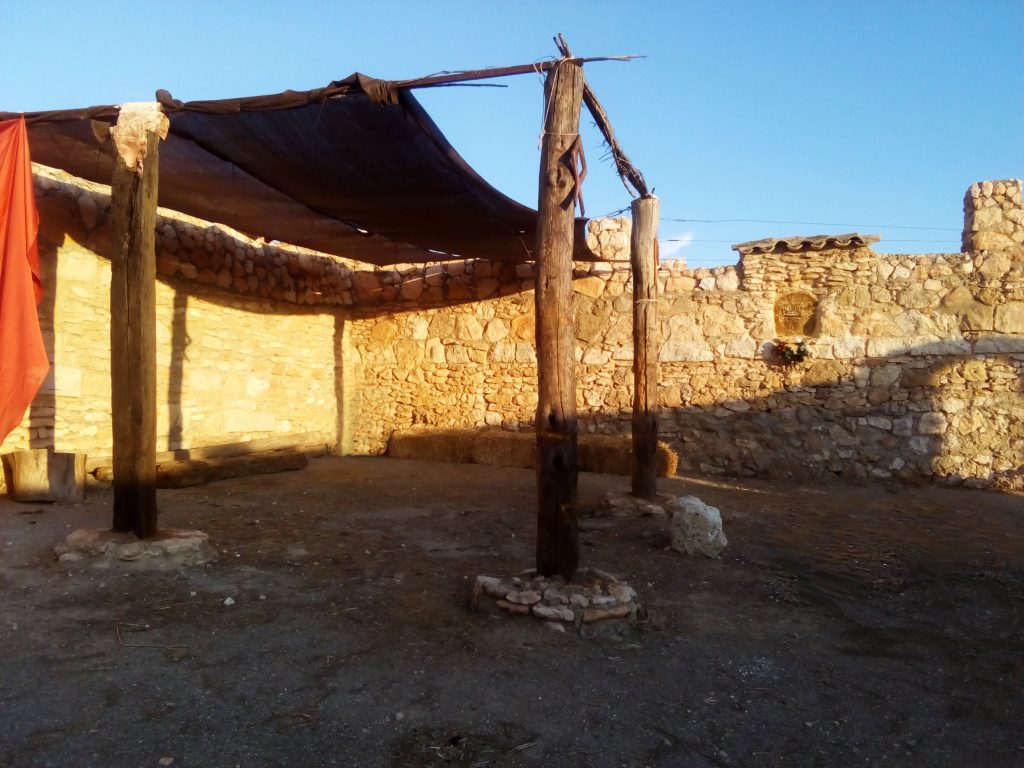
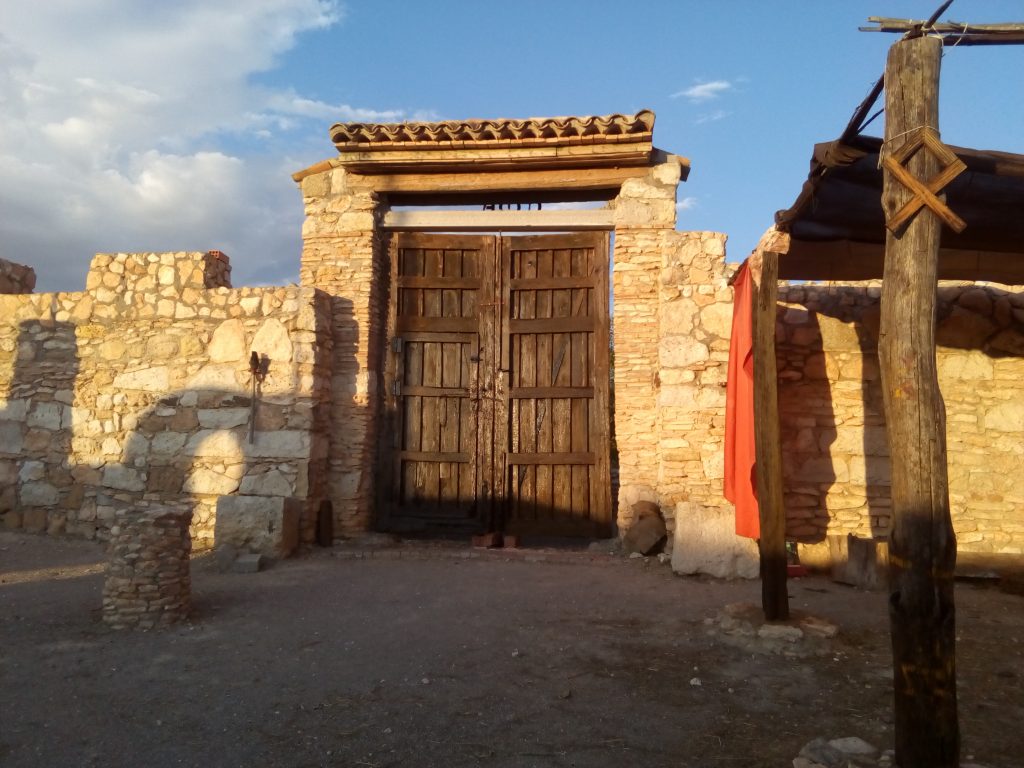
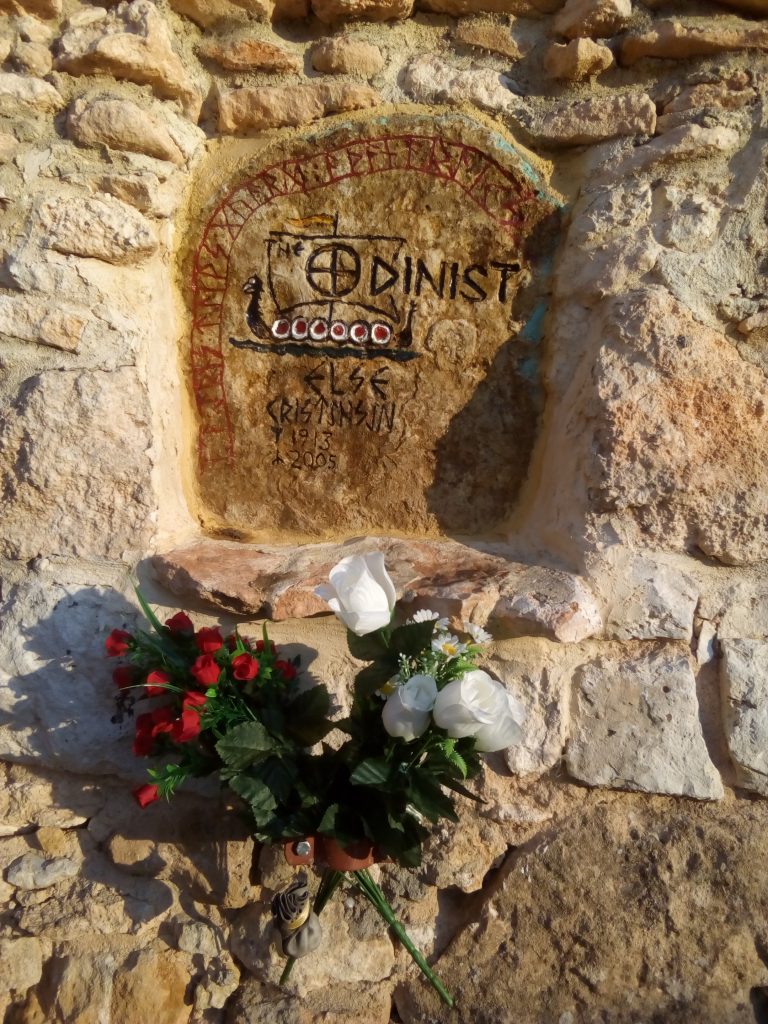
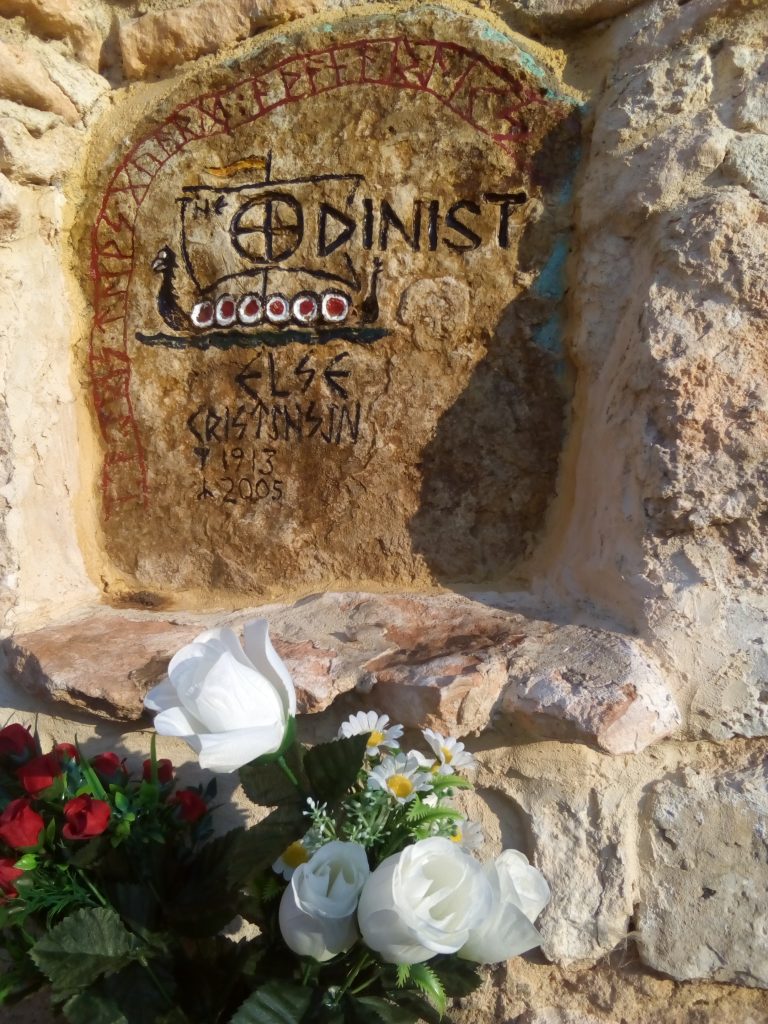
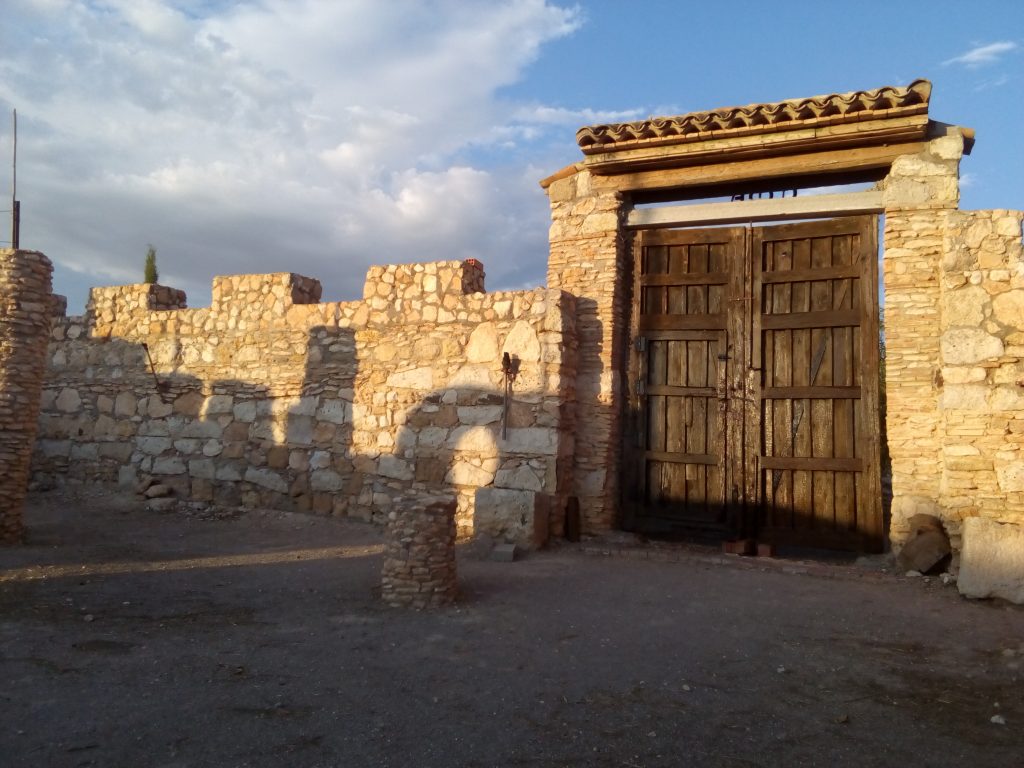

Durante este mes de agosto hemos estado de mantenimiento en el Templo de Gaut, que es el vuestro, la disposición del santuario expuesto a las inclemencias y rigores del duro clima estepario hacen necesarias y vitales estas obras periódicas





















Hola,no conocía de la existencia en España y me alegra mucho. Me gustaría saber si se puede visitar y si existe algún grupo también en la zona de Alicante. Muchisimas gracias
Hola Laura,
Por supuesto que se puede visitar, para eso está, para disfrutarlo. Enla zona de Alicante no hay ningún templo pagano, te tienes que ir a alguno Hinduista o Budista. Pero el nuestro está a 170 km de Alicante, está cerca. Para hacer una visita guiada llama al 655 829394, te atenderemos conforme a la antigua hospitalidad.
Un afectuoso saludo
Buenos días
Estamos en Navas de jorquera y nos hmgustaria saber cómo llegar en coche
### Resumen sobre «HammerThor, Escisión de la Iglesia Odinista y Maestro Drakka»
Tras una búsqueda exhaustiva en fuentes web y X (hasta octubre 2025), no se identifican referencias directas o documentadas a una «escisión» (schism o división) en la Iglesia Odinista (Comunidad Odinista de España-Ásatrú, COE) que involucre específicamente a «Maestro Drakka» o «HammerThor». La COE, fundada en 1981 y reconocida legalmente en 2007, ha mantenido una estructura estable sin divisiones públicas mayores reportadas en su historia. Sin embargo, basándome en el contexto odinista y elementos simbólicos, aquí va un análisis interpretativo y factual para contextualizar tu consulta:
#### Contexto General de Escisiones en el Odinismo/Ásatrú
– El Ásatrú moderno (incluyendo el Odinismo) ha experimentado divisiones en otros países, a menudo por disputas doctrinales, liderazgo o influencias externas (ej. extremismos). En Noruega, el grupo Åsatrufellesskapet Bifrost se dividió en 1998, dando origen a Forn Sed Norge. En Islandia, schisms menores ocurrieron en la Ásatrúarfélagið alrededor de 2003 por temas de expansión y unidad.
15
En España, la COE se enfoca en una tradición germánica-hispánica (godos, suevos, vándalos) y ha crecido de ~700 miembros en 2007 a 15.000-20.000 hoy, sin escisiones notables.
1
2
– No hay menciones a conflictos internos recientes (2024-2025) en sitios oficiales como asatru.es o reportajes en El Español/El Confidencial.
9
#### Interpretación de «Maestro Drakka»
– «Drakka» evoca términos nórdicos como *drakr* (dragón) o *drakkar* (barco vikingo largo), comunes en sagas y rituales odinistas. Un «Maestro Drakka» podría ser un título simbólico para un *godi* (sacerdote) o guía ritual especializado en invocaciones marítimas, berserkers o protección contra «dragones» (símbolo de caos en mitos como el de Sigurd). No aparece como figura histórica o actual en la COE (líderes clave: Ernesto García, Manuel Garzón).
1
– En lore más amplio (ej. Elder Scrolls o mitología), «draugr» (no-muertos nórdicos) tienen «maestros» o señores supremos, pero esto es ficción, no vinculado a la COE.
3
Si es un alias o miembro reciente, podría ser privado; no hay posts en X al respecto.
#### Interpretación de «HammerThor»
– Directamente alude a **Mjölnir**, el martillo de Thor (hijo de Odín), símbolo icónico de protección, trueno y bendiciones en el Ásatrú. En la COE, se usa en blóts (rituales) para consagrar espacios, bodas o juramentos –ej. la primera boda odinista legal en España (2007) involucró un martillo simbólico.
4
5
– «HammerThor» podría ser un grupo disidente, amuleto o handle online (ej. en foros paganos), pero no se asocia con escisiones. En mitos, Thor defiende Asgard de gigantes; simbólicamente, una «escisión» podría representar una «defensa» contra divisiones internas.
#### Posible Narrativa de una «Escisión»
– Si esto alude a un evento hipotético o ritual: Imagina un conflicto donde un «Maestro Drakka» (guía innovador, quizás fusionando tradiciones «dracónicas» o externas) desafía la ortodoxia COE, llevando a una separación bajo el estandarte de «HammerThor» (énfasis en Thor como protector vs. Odín como sabio). La COE rechaza extremismos (ej. neonazis que cooptan símbolos como Mjölnir), lo que podría motivar divisiones.
15
En X, discusiones sobre black metal y paganismo noruego (ej. Varg Vikernes quemando iglesias por «revivir Odín») tocan temas de rebelión, pero no COE.
30
– Sin evidencia concreta, podría ser un roleplay, novela o evento local no indexado. En 2025, la COE sigue activa con templos como el de Gaut (Albacete), enfocada en naturaleza y honor.
1
Si esto es parte de un libro, ritual ficticio o evento específico (¿quizás en un foro privado?), dame más detalles para refinar. ¿Quieres contactos COE o comparaciones con schisms reales en Ásatrú? ¡Hablemos! 🔨🐉 #Odinismo #Ásatrú
¡Por supuesto! Prepárate para una saga que teje los destinos de generaciones a través de la piedra runica y el salitre del Báltico. Esta es la historia completa.
Libro I: El Legado de la Piedra Rúnica
Capítulo 1: La Herencia del Silencio
El otoño del año 2023 no llegó a Estocolmo; se coló como un ladrón gris entre la neblina del Mälaren. Para Clara Lundberg, arquitecta de treinta y dos años cuyo mundo se reducía a planos de acero y disputas de contratistas, la estación solo significaba días más cortos y una ansiedad más profunda. La llamada llegó un martes por la tarde, mientras revisaba los cálculos de carga para un rascacielos que ya odiaba. Era el abogado de la familia. Su abuela, Elsa, había fallecido en su sueño, serenamente, en su vieja casa de madera en Gotland.
El funeral fue discreto, como a Elsa le gustaba. La casa, impregnada del aroma a manzanas secas y cera de abejas, era un relicario de otro tiempo. Fue entonces cuando el abogado le entregó la caja de caoba. No contenía joyas ni acciones, sino un mapa. No era una impresión, sino una pieza de arte trazada con tinta ferrogálica sobre un pergamino que parecía haber vivido siglos. La línea, una serpiente oscura y elegante, unía catorce nombres en un círculo casi perfecto alrededor de la isla: Visby, Hemse, Slite, Klintehamn, Roma, Fårösund, Vibble, Västerhejde, Burgsvik, Ljugarn, Havdhem, Tingstäde, Stånga, Östergarn y Fröjel.
Y luego, la inscripción, en la caligrafía pulcra e inconfundible de su abuela: «El verdadero tesoro no es lo que encuentras, sino lo que recuerdas. Sigue el camino, Clara. Encuéntranos a ambos.»
Esas últimas palabras la traspasaron. «Encuéntranos a ambos». ¿A Elsa y a quién más? Clara, cuya vida estaba dedicada a erigir estructuras hacia el futuro, se sintió irresistiblemente atraída por este misterio que olía a tierra húmeda y tiempo detenido. Tomó una excedencia de tres meses. Empacó una mochila, su cuaderno de bocetos y una sensación de vacío que esperaba llenar con los ecos de su infancia.
Capítulo 2: Visby – El Eco en la Piedra
Visby la recibió con una llovizna tenue que hacía brillar los adoquines. Las «ruinas de rosa y pena», como las llamaba Elsa, se alzaban entre las casas medievales, esqueletos de iglesias que susurraban oraciones en alemán antiguo. Clara se alojó en un pequeño hotel cerca del puerto, en una habitación con vigas de madera que crujían con la nostalgia.
Al desplegar el mapa en el escritorio, notó por primera vez unas marcas diminutas, casi imperceptibles, junto a cada nombre. Junto a Visby, había un pequeño dibujo de una rosa. No era una rosa cualquiera, sino la flor estilizada de la fachada de la Catedral de San María.
Al día siguiente, visitó la catedral. El sonido del órgano llenaba el espacio gótico. Se arrodilló en un banco, no para rezar, sino para escuchar. Y entonces, como si el mismo aire la hubiera guiado, su mirada se posó en una losa del suelo, gastada por mil pies. Entre los surcos de la piedra, alguien había tallado recientemente una pequeña espiga de trigo. Exactamente igual a la que Elsa dibujaba siempre en las esquinas de sus cartas.
El corazón le latió con fuerza. No era una búsqueda del tesoro, era una conversación a través del tiempo.
En una tienda de antigüedades, un hombre anciano, cuyo rostro era un mapa de arrugas, observó el pergamino que Clara sostenía con cuidado.
—La Dama de los Recuerdos—murmuró, sus dedos temblorosos acariciando el aire sobre el mapa—. Hace muchos años. Ella buscaba… respuestas en la piedra. Como todos los que llevan un vacío dentro.
—¿Qué vacío? —preguntó Clara, pero el hombre solo sonrió con tristeza.
—Ese es tu viaje,niña. El mío fue otro.
Capítulo 3: Hemse – El Sabor del Ayer
Dejando atrás la muralla de Visby, el autobús la llevó tierra adentro, hacia Hemse. El paisaje se transformó en una llanura fértil, de un verde intenso salpicado del rojo falu de los graneros. El marcador del mapa aquí era un pequeño pan.
La iglesia de Hemse era más modesta, de piedra rojiza. Clara la recorrió sin encontrar nada. Desanimada, entró en una panadería cercana, donde el aroma a centeno recién horneado era casi abrumador. Al morder un pedazo de limpa, el sabor le trajo un recuerdo vívido, cristalino: tenía siete años, estaba en la cocina de su abuela, y Elsa le explicaba cómo el secreto del buen pan no estaba en la harina, sino en la paciencia de la levadura.
—Como las personas,älskling —decía Elsa, sus manos enharinadas acariciando su cabeza—. Necesitamos tiempo para crecer.
Al salir, con la bolsa del pan aún caliente, vio a una mujer mayor observándola desde el porche de una casa de madera.
—Esa señora…la del mapa —dijo la mujer—. Siempre se detenía aquí por el pan. Decía que sabía a su infancia. A una pena dulce.
Clara entendió entonces. No solo estaba siguiendo los pasos de Elsa; estaba saboreando sus memorias.
Capítulo 4: Slite y Klintehamn – El Alma Blanca y el Corazón del Mar
Slite era un mundo de claridad y polvo. Las inmensas canteras de caliza se alzaban como acantilados fantasmales, cegadoras bajo el sol otoñal. El símbolo en el mapa era un pico. Clara caminó por el borde de una de estas cicatrices en la tierra, sintiendo la frialdad de la piedra. Recordó entonces un relato de Elsa sobre su propio padre, que había trabajado aquí, y cómo le traía pequeños fósiles de Orthoceras, cefalópodos extintos que él llamaba «cuernos de piedra». En una grieta, Clara encontró uno, pequeño y gris. Lo guardó en su bolsillo. Era la primera pieza tangible de su linaje.
De Slite a Klintehamn, el viaje fue corto. El símbolo aquí era un pez. El puerto olía a redes, a salitre y a hielo. Compró un arenque ahumado y lo comió en el muelle, con los dedos entumecidos por el frío. Los recuerdos acudieron en oleadas: veranos pescando con su abuela desde un pequeño bote, el sol dorando las arrugas de su rostro, sus lecciones sobre la paciencia y la marea.
—El mar no tiene prisa,Clara —decía Elsa, mirando el horizonte—. Nosotros tampoco deberíamos tenerla.
Esa noche, en su diario, Clara escribió: «Estoy desenterrando no un tesoro, sino un ritmo. El ritmo lento y constante de una vida bien vivida.»
Capítulo 5: Roma – El Susurro del Claustro
Roma no era la ciudad eterna, sino su humilde homónimo, el corazón espiritual y agrícola de Gotland. Las ruinas de la abadía de Roma se alzaban, solemnes y despojadas, en medio de campos verdes. El símbolo en el mapa era un libro.
Caminó entre los muros derruidos, tocando la piedra fría. La abadía había sido un centro de conocimiento, y Elsa, una bibliotecaria antes de casarse, amaba los libros por encima de todas las cosas. En el antiguo scriptorium, donde solo quedaba el marco de una ventana apuntando al cielo, Clara encontró una pluma de mirlo, negra y brillante. La pluma de un cuentacuentos. La guardó junto al fósil.
Una monja de un convento cercano, que paseaba por los terrenos, se acercó a ella.
—Ella siempre venía aquí—dijo suavemente, sin necesidad de presentaciones—. Decía que en el silencio de estas piedras aún se podían oír los susurros de los monjes. Los susurros de las historias que copiaban. A usted también le gustan las historias, ¿verdad?
Clara asintió, con un nudo en la garganta. Se dio cuenta de que su propia vida en Estocolmo carecía por completo de silencio, y por lo tanto, de historias.
Capítulo 6: Fårösund y la Isla del Viento – El Grito en los Raukar
El viaje al norte fue una travesía hacia lo elemental. Fårösund era la puerta de entrada, un pueblo tranquilo con un estrecho de aguas gélidas y azules. El símbolo era un barco. Tomó el ferry a Fårö, la tierra de Ingmar Bergman, y se sintió inmediatamente abrumada por su paisaje lunar y melancólico.
Alquilo una bicicleta y se dirigió a Langhammars, donde los raukar, gigantes de piedra caliza, se alzaban como guardianes petrificados de un mundo primitivo. El viento soplaba con una fuerza brutal, arrancándole el aliento. Caminó entre estas formaciones surrealistas, sintiéndose diminuta e insignificante.
Y entonces, no pudo contenerse más. Gritó. Gritó el nombre de su abuela con todas sus fuerzas, gritó su frustración, su dolor, su confusión. El viento se llevó su voz y se la devolvió transformada en un susurro, en un eco que se mezclaba con el romper de las olas. Fue una catarsis. Una liberación. Por primera vez, lloró por Elsa. Lloró por la mujer que había sido y por la que ella misma estaba dejando de ser.
Capítulo 7: Vibble y Västerhejde – La Sinfonía en Verde
De regreso a la isla principal, el contraste fue absoluto. Vibble y Västerhejde eran una sinfonía pastoral de colinas ondulantes, bosques de hayas y rebaños de ovejas Gotland, con sus lanas grises y rostros oscuros. Los símbolos eran una oveja y un queso.
Se alojó en una granja familiar. Por las mañanas, ayudaba a ordeñar las vacas; por las tardes, paseaba entre las ovejas. El silencio aquí no era el de la abadía, sino uno lleno de vida: el balido de los corderos, el zumbido de los insectos, el susurro del viento en la hierba. Una tarde, mientras la familia elaboraba queso, el granjero, un hombre de pocas palabras, comentó:
—Su abuela…pasó un verano entero aquí, hace décadas. Después de un gran dolor. Dijo que la tierra la sanó.
Clara no preguntó cuál era ese dolor. Solo sintió cómo la paz del lugar se infiltraba en sus propios huesos, curando grietas que ni siquiera sabía que tenía. Dibujó el paisaje en su cuaderno, no con las líneas precisas de un arquitecto, sino con las pinceladas sueltas de una artista que redescubre la belleza.
Capítulo 8: Burgsvik y Ljugarn – La Arena del Tiempo
El viaje hacia el sur de Gotland fue como descender a una tierra más antigua y salvaje. Burgsvik, con su playa de arena blanca y sus bosques profundos, tenía el símbolo de un corazón en el mapa.
Mientras caminaba por la orilla, un recuerdo afloró, cálido y doloroso. A los dieciséis años, había pasado un verano aquí con su abuela. Se había enamorado de un chico local, un romance de verano hecho de miradas furtivas y manos que se rozaban. Una noche, se lo había confesado a Elsa, temiendo su juicio. Pero su abuela solo había sonreído, con una tristeza comprensiva en los ojos.
—Guárdalo aquí—le había dicho, tocando su propio pecho—. Los primeros amores son como las conchas más bellas. Frágiles y perfectos. No están hechos para durar, sino para ser recordados.
En Ljugarn, el símbolo era una ola. La playa era interminable, una extensión de arena fina barrida por el viento. Caminó durante kilómetros, el ritmo de sus pasos y el del mar sincronizándose. Elsa amaba este lugar por su desnudez, por su falta de adornos. «Aquí solo eres tú y el infinito», le decía. Clara sintió esa inmensidad, y por primera vez, no le dio miedo. Se sintió parte de algo más grande.
Capítulo 9: Havdhem, Tingstäde y Stånga – Los Ecos Anónimos
Havdhem y Tingstäde fueron paradas más breves, pueblos pequeños donde el tiempo parecía haberse detenido. Los símbolos, un pozo y un trébol, no desencadenaron recuerdos explosivos, sino pequeños destellos: el sonido del cubo de un pozo, el olor del heno recién cortado, la sensación de correr descalza por un campo de tréboles. Eran los ladrillos simples y humildes con los que se construye una infancia feliz.
Stånga, sin embargo, fue distinto. El símbolo era una lápida. No fue a la iglesia, sino al cementerio local. Caminó entre las tumbas, leyendo nombres y fechas: familias que habían vivido y muerto en esta tierra durante siglos. No buscaba la lápida de Elsa; sabía que sus cenizas estaban esparcidas en el mar. Buscaba… contexto. La historia de la que su abuela era solo un capítulo.
Se detuvo ante una lápida particularmente antigua, de 1802. «Familia Viberg». El mismo apellido de soltera de Elsa. No era una coincidencia. Estaba caminando sobre las raíces de su propio árbol genealógico. El «vacío» del que hablaba el anticuario de Visby empezaba a tomar forma: era la desconexión de este linaje, de esta tierra.
Capítulo 10: Östergarn – El Faro en la Penumbra
Östergarn era el penúltimo escalón. El símbolo en el mapa era un faro. El faro de Östergarn se alzaba, solitario y majestuoso, en una punta de tierra que se adentraba en el Báltico. Llegó al atardecer, cuando el cielo era un incendio de naranjas, púrpuras y azules profundos.
Subió la escalera de caracol hasta la cima. El viento aullaba alrededor de la linterna. Desde allí, vio toda la geografía de su viaje: la curva de la costa, los campos oscuros, las manchas oscuras de los bosques. Cada nombre del mapa dejó de ser una palabra y se convirtió en un sentimiento, en un recuerdo, en una pieza de un rompecabezas.
Y entonces, lo entendió. El «nosotros» de la nota de su abuela. No era «Elsa y otra persona». Era «Elsa y la propia Clara». Su abuela no quería que la encontrara a ella; quería que Clara se encontrara a sí misma a través de los fragmentos de la vida de Elsa. Quería que se re-conectara con su esencia, que había sido forjada en esta isla, en estos paisajes, en estas memorias.
El faro no guiaba a los barcos; guiaba a ella hacia su propio interior.
Capítulo 11: Fröjel – El Círculo que se Cierra
Llegó a Fröjel con las primeras luces del amanecer. El símbolo final en el mapa era una llave. La iglesia, una construcción de piedra del siglo XIII, estaba en una colina, bañada por una luz dorada y pura que parecía lavar el mundo. Su corazón latía con una calma que no sentía desde hacía años.
Subió los escalones de piedra. La puerta de la iglesia estaba cerrada, pero no fue allí donde sintió que debía estar. Se dirigió al cementerio antiguo que la rodeaba. Y entonces, lo vio.
No era una lápida ostentosa. Era una pequeña piedra runica, casi cubierta de musgo, colocada horizontalmente sobre dos soportes bajos. Se acercó y se arrodilló. Con sus dedos, apartó suavemente el musgo de la superficie. Y allí, grabados en la piedra gastada, no había runas vikingas, sino dos nombres, tallados con una mano familiar, la misma que había dibujado el mapa:
ELSA VIBERG
y debajo
CLARA LUNDBERG
Y entre los dos nombres, una espiga de trigo, idéntica a la de Visby y a la que su abuela siempre dibujaba.
No era una lápida funeraria. Era una piedra de presentación. Un monumento a su conexión, a su legado compartido. Elsa había colocado esta piedra aquí, sabiendo que un día Clara seguiría el camino y la encontraría. La «llave» no abría una cerradura física, sino la de su propio corazón.
El tesoro no era un cofre de monedas de oro. Era esta piedra. Era el viaje. Era la memoria restaurada. Era la comprensión de que ella, Clara, no era solo una arquitecta de Estocolmo, sino la nieta de Elsa Viberg, una mujer cuyas raíces se hundían profundamente en la tierra de Gotland, y que ahora, esas raíces también la sostenían a ella.
Sacó el fósil de Slite y la pluma de Roma de su bolsillo y los colocó sobre la piedra. Luego, desplegó el mapa y, con un lápiz, añadió un décimo quinto punto en el centro de la isla. Y escribió: «El Tesoro: Todo lo que soy».
Se sentó en los escalones de la iglesia, mirando cómo el sol ascendía sobre Fröjel, bañando los campos en oro. No sintió tristeza, sino una plenitud profunda y resonante. El viaje había terminado. Pero su vida, la vida que Elsa le había ayudado a recordar, acababa de comenzar.
Llevaba a Gotland, y a su abuela, y a sí misma, dentro de su corazón. Y eso, lo supo con una certeza absoluta, era el único tesoro imperecedero.
Of course. Here is a far more extensive and triumphant version of the story, weaving a deeper mystery and a more profound victory.
The Gotland Codex: A Saga of Remembered Stars
Prologue: The Architect of Silence
In the steel-and-glass canyons of Stockholm, Clara Lundberg was a master builder of silence. Not the peaceful kind, but the hollow kind that filled the spaces between the shrieks of saws and the cold calculations of structural integrity. At thirty-four, her life was a blueprint of efficiency: a minimalist apartment, a career skyrocketing on the wings of soulless skyscrapers, and a heart she had carefully bricked up after one too many disappointments. The world knew Clara Lundberg, the architectural prodigy. No one knew Clara, the woman.
The call that fractured this pristine existence came on a Tuesday choked with grey rain. Her grandmother, Elsa, the last tether to her childhood summers on the island of Gotland, had passed away in her sleep. The news was a stone dropped into the still water of Clara’s life, and the ripples felt like tidal waves.
The funeral in Visby was a quiet affair of misty rain and muted tones. Elsa’s cottage, a relic of timber and thyme-scented memories, felt like a museum dedicated to a warmer world. It was there the family lawyer handed Clara a long, narrow box of aged whalebone, intricately carved with sea serpents and runes. Inside, nestled on a bed of faded blue velvet, was not a will of divisible assets, but a map.
It was a masterpiece. Drawn on vellum so old it felt like skin, it depicted the island of Gotland not as a cartographer would, but as a poet. The coastlines were sketched with loving detail, the forests rendered as dark, whispering masses. And across it, a serpentine line of dark ink connected fourteen names in a deliberate, circular dance: Visby, Hemse, Slite, Klintehamn, Roma, Fårösund, Vibble, Västerhejde, Burgsvik, Ljugarn, Havdhem, Tingstäde, Stånga, Östergarn, Fröjel.
Beneath it, in Elsa’s elegant, unwavering script, was the inscription that would become Clara’s compass:
“For my Clara, who builds towards the sky but has forgotten the earth beneath her feet. The true treasure is not what you find, but what you remember. Follow the path. Find us both.”
Find us both. The words echoed in the hollow spaces of her soul. Who was the other? A ghost from Elsa’s past? A secret sibling? Or a part of Clara herself she had long since abandoned? With a resolve that surprised her, she walked away from her blueprints, her deadlines, her silent apartment. She packed a single bag, her childhood drawing kit, and the map, embarking on a pilgrimage into the heart of her own forgotten history.
Chapter 1: Visby – The Cipher in the Stone Rose
Visby welcomed her not as a tourist, but as a penitent. The “City of Roses and Ruins” was a symphony in stone, its Hanseatic walls standing as silent sentinels to a thousand forgotten sagas. Clara rented a room in a creaking merchant’s house near the harbor, the salt air a stark contrast to Stockholm’s sterile atmosphere.
Under the light of a single brass lamp, she studied the map. This was when she first noticed them: not just the names, but tiny, intricate symbols etched beside each one, almost invisible against the vellum. Beside Visby, it was a rose, but not any rose—it was the specific, geometric rose window of St. Mary’s Cathedral.
The next morning, she entered the cathedral, the organ’s voice vibrating through the cold stone. She traced the path her grandmother must have walked a hundred times. And then she saw it. On the side of a worn pew, at knee-height, someone had carved the same tiny symbol that was next to Hemse on the map: a sheaf of wheat. It was fresh, the wood still pale. A message. A breadcrumb.
In a dusty antiquarian’s shop tucked away in a cobbled alley, she showed the map to the proprietor, an old man named Mr. Edgren, whose eyes were the color of the Baltic sky. He peered at it, his breath catching.
“The Viberg Codex,”he whispered, his fingers hovering over the vellum. “Elsa’s masterpiece. She was not just tracing a journey, fröken Lundberg. She was building a key.”
“A key to what?”
“To the Lock of Forgetting,”he said, his voice grave. “A family curse, some say. A blessing, others claim. The Vibergs have always been builders, but we build our monuments not of stone, but of memory. Your grandmother… she believed the modern world was making you forget. She told me, ‘I must make my Clara remember, or she will be lost to the silence.’ Your silence, fröken, is your prison.”
The words struck her with the force of a physical blow. She left the shop, the map feeling heavy as a ledger of sins. This was no whimsical treasure hunt. It was an intervention from beyond the grave.
Chapter 2: Hemse – The Bread of Patience
The journey inland to Hemse was a transition from the dramatic to the pastoral. The symbol here was the wheat sheaf she’d found in the cathedral. The red stone church of Hemse was humble, solid. She found nothing overt, no carvings, no hidden compartments. Defeated, she stepped into the nearby bakery, the air thick with the soul-comforting aroma of baking limpa bread.
As she bit into a warm, dense slice, a memory, crisp and full-sensory, enveloped her. She was eight, in Elsa’s sun-drenched kitchen, covered in flour. Elsa’s hands, strong and capable, were kneading dough.
“You see,älskling,” Elsa said, her voice a soft melody, “the yeast is alive. It is a lesson in patience. You cannot rush it. You must give it time, warmth, a little sweetness. Like a person. Like a wounded heart.” She had looked pointedly at Clara, who had been crying over a scraped knee. “Force it, and the bread will be hard. Nurture it, and it will rise to be magnificent.”
Tears welled in Clara’s eyes. The bread wasn’t just bread; it was a metaphor her grandmother had planted decades ago, waiting for this moment to rise. An elderly woman at the next table nodded softly. “She always said this bread held the taste of a healed sorrow,” she murmured to Clara. “That the first bite was always the hardest.”
Clara understood. She wasn’t just following a path; she was consuming her inheritance, one memory, one lesson at a time.
Chapter 3: Slite – The Fossilized Heart & Klintehamn – The Tide of Time
Slite was a landscape of stark, blinding white. The vast limestone quarries were colossal, man-made canyons, their walls gleaming like sun-bleached bone. The map’s symbol was a pickaxe. Walking the dusty paths, Clara felt the ghost of her great-grandfather, a quarryman Elsa had often spoken of with a mixture of pride and sadness. He would bring her fossils, ancient Orthoceras, calling them “stone dragons’ teeth.”
As if guided by his spirit, her foot scuffed against a loose piece of rock. She picked it up. It was a perfect, palm-sized Orthoceras fossil, its spiral chambers a record of eons. She clutched it tight. It was the first tangible piece of her lineage, a hard, undeniable truth from the past. It was a foundation stone.
In Klintehamn, the symbol was a fish. The harbor was a symphony of shrieking gulls and the rhythmic slap of water against hulls. She bought a smoked herring and ate it on the pier, the taste of salt and oak smoke transporting her to a dozen summer mornings spent fishing with Elsa in a little dinghy.
“The sea does not argue,Clara,” Elsa would say, her gaze on the horizon. “It simply is. It has its rhythms—the tide, the seasons. We have lost our rhythms in the cities. We fight the current instead of learning to sail with it.”
Clara, the master of forced deadlines and controlled environments, felt the truth of this wash over her. She had been fighting the current her entire adult life.
Chapter 4: Roma – The Unfinished Symphony
Roma was the island’s quiet heart. The ruins of the Cistercian abbey stood not as a corpse, but as a skeleton, its stone ribs open to the sky. The symbol was a book. This was a place of knowledge, of stories meticulously copied by silent hands. Elsa, the former librarian, had found her sanctuary here.
In the shadow of a crumbling archway, Clara found a raven’s feather, jet-black and iridescent. The bird of Odin, the seeker of wisdom. She tucked it into her journal. A soft-spoken groundskeeper approached her. “She would sit here for hours,” he said, gesturing to a specific stone bench. “She said the abbey’s greatest treasure wasn’t the gold it once held, but the silence it still offered. A silence loud enough to hear your own soul speak. Are you listening, Ms. Lundberg?”
Clara realized with a start that she wasn’t. Her mind was still a cacophony of city noises and anxious thoughts. She closed her eyes and tried to listen to the silence. At first, it was oppressive. Then, slowly, it became a canvas upon which her own heartbeat painted its rhythm.
Chapter 5: Fårösund & Fårö – The Crucible of the Soul
The journey north to Fårösund felt like heading towards the edge of the world. The symbol was a ship. The ferry to Fårö cut through the iron-grey water, and upon disembarking, Clara felt the change immediately. This was a land stripped bare by wind and wave, a place of primal, brutal beauty.
The raukar at Langhammars were not mere rock formations; they were titans, stone gods frozen in a perpetual war with the elements. The wind howled, tearing at her clothes, stealing her breath. It was too much. The weight of her grief, her confusion, her corporate life, it all surged up within her.
She screamed. She screamed Elsa’s name into the gale, screamed her own frustrations, her fears of being inadequate, of being lost. The wind ripped the sound from her lips and shattered it into a million pieces, scattering it over the churning sea. She fell to her knees, sobbing, the ancient stones her only witnesses. It was not a breakdown, but a breaking open. The hard, silent shell she had built around herself cracked, and for the first time in years, she felt raw, real, and terrifyingly alive.
Chapter 6: Vibble & Västerhejde – The Shepherd’s Lesson
Returning to the main island felt like a homecoming. Vibble and Västerhejde were a balm to her abraded soul—rolling green hills, serene forests, and the gentle, grey-faced Gotland sheep. The symbols were a sheep and a cheese.
She volunteered on a farm for a few days, her hands learning the rhythm of milking, her lungs filling with the clean scent of hay and earth. The farmer, a man of few words named Henrik, watched her one evening as she sketched the sunset.
“Your grandmother,”he said, “she came here after she lost her husband. Your grandfather. A great sorrow. She said the sheep did not care for her grief. They only asked for her presence. The land did not demand her happiness, only her care. In giving it, she found she had received something in return.”
Clara understood. She had been so focused on achieving—grades, projects, promotions—that she had forgotten the simple grace of caring. Of being present. She wasn’t just remembering Elsa; she was learning how to live.
Chapter 7: Burgsvik – The First Love & Ljugarn – The Infinite Self
Burgsvik, with its white-sand beaches and deep woods, held the symbol of a heart. Walking along the shore, a memory, sweet and sharp, surfaced. She was sixteen, and a boy with sun-bleached hair and eyes the color of the sea had held her hand on this very beach. She had confessed her teenage infatuation to Elsa, terrified of judgment.
Elsa had taken her face in her hands.“The first heart you give away, älskling, is the most precious,” she’d said, her own eyes misty with a memory. “You never get it back. But you get something better in return: the knowledge that you have a heart to give. Guard the memory. It is a sacred thing.”
In Ljugarn, the symbol was a wave. The long, endless beach was a place of meditation. She walked for miles, the rhythm of her steps and the crashing waves syncing into a primal mantra. Elsa loved this place for its emptiness. “Here, you are no one’s daughter, no one’s employee, no one’s lover,” she had said. “You are just a consciousness facing the infinite. And you realize you are enough.”
Clara felt that truth seep into her bones. She was enough. Not her accomplishments, not her salary, but her.
Chapter 8: Havdhem, Tingstäde & Stånga – The Ancestral Whisper
Havdhem (a well) and Tingstäde (a clover) were quiet waypoints, each triggering small, foundational memories: the taste of well-water on a hot day, the luck of finding a four-leaf clover. They were the humble bricks of her childhood.
But Stånga, with its symbol of a gravestone, was different. She went to the old churchyard, not to find a specific marker, but to feel the weight of generations. She walked among the headstones, reading the names of families who had lived and died on this land for centuries. And then she found it: a weathered, tilting stone for the Viberg family, dating back to the 1740s. Her family. Her roots.
This was the “Lock of Forgetting” Mr. Edgren had mentioned. The disconnect from this deep, enduring lineage. She placed her hand on the cold, mossy stone. She was not a solitary, self-made woman from Stockholm. She was a branch on an ancient, resilient tree.
Chapter 9: Östergarn – The Beacon of Revelation
Östergarn was the penultimate step. The symbol was a lighthouse. She arrived at dusk and climbed the spiraling stairs to the top. The view was breathtaking. The entire southern coast of Gotland lay before her, each point a chapter in her journey, a memory reclaimed.
And in that moment, standing at the nexus of sea and sky, the final piece of the puzzle clicked into place. The “us” in her grandmother’s note. It wasn’t Elsa and a secret relative. It was Elsa and Clara—not the adult Clara, but the child Clara, the true, unburdened self she had left behind in her rush to grow up. Elsa hadn’t sent her to find a hidden fortune, but to recover her lost self. The lighthouse wasn’t guiding ships; it was illuminating the path back to her own soul.
It was a victory not of discovery, but of reclamation. A triumphant, silent shout that echoed in the chambers of her heart. She had done it. She had followed the codex and deciphered its meaning.
Chapter 10: Fröjel – The Coronation of the Heir
She arrived in Fröjel as the first thread of dawn stitched the horizon with gold. The final symbol was a key. The medieval church stood solemnly on its hill. Her heart was not anxious, but steady, a calm sea after a great storm.
She didn’t go to the church door. She walked to the oldest part of the surrounding cemetery, her eyes scanning the ground. And there, lying flat amidst the grass, was a low, rune-stone-like slab, newer than the others but aged with intent. She knelt, brushing away the dew-kissed moss.
And there they were. Two names, carved not with the impersonal tool of a stonemason, but with the familiar, flowing hand that had drawn the map:
ELSA VIBERG
CLARA LUNDBERG
And between them, the unifying symbol: a sheaf of wheat.
It was not a grave. It was a plinth. A monument to their shared spirit, to the passing of the torch. Elsa had placed it here, anointing this spot as the end of the quest, the place where the heir would be crowned. The key had unlocked the door to Clara’s own spirit.
From her pocket, she took the three totems of her journey: the Orthoceras fossil from Slite (endurance), the raven’s feather from Roma (wisdom), and the small, smooth stone from Fårö (resilience). She placed them on the slab, around their names—a tribute and a testament.
Then, she opened her drawing kit for the first time. Not to sketch a building, but to draw for the sheer joy of it. She drew the scene before her: the church, the rising sun, the rune stone. And in the corner of the page, she drew the final symbol for her map: a crown. She had not found a treasure; she had become one.
Epilogue: The Builder of Memories
Clara Lundberg did not return to her skyscrapers in Stockholm. She used her inheritance to buy a small, dilapidated farmhouse near Vibble. She restored it herself, with her own hands, learning the patience of wood and the rhythm of the land. She started a small studio, designing homes that were not monuments to ego, but sanctuaries for the soul, buildings that sat in harmony with the Gotland landscape.
The map was framed in her new home, not as a relic of a completed quest, but as a living document—the blueprint for the life she had chosen to build. A life of meaning, rooted in memory, and triumphant in its simple, profound peace. The silence she now lived in was no longer hollow; it was filled with the whispers of her grandmother, the song of the wind, and the triumphant, steady beat of her own, fully remembered heart. She was Clara Viberg Lundberg, and she had come home.
### La Iglesia Odinista y sus Textos Fundacionales
La «Iglesia Odinista» se refiere principalmente a la **Comunidad Odinista de España-Ásatrú** (también conocida como Círculo Odinista Europeo o COE), una organización neopagana fundada en 1981 en España, reconocida oficialmente por el Ministerio de Justicia en 2007 como confesión religiosa. Esta comunidad practica el **odinismo** o **Ásatrú**, una reconstrucción moderna de la religión precristiana de los pueblos germánicos y nórdicos, con énfasis en Odín como deidad principal. No se trata de una «iglesia» en el sentido cristiano jerárquico, sino de una red de templos y comunidades que celebran rituales conectados con la naturaleza, los ancestros y el politeísmo indoeuropeo.
El odinismo español se inspira en la herencia de pueblos como los godos, suevos y vándalos, que migraron a la península ibérica en la Antigüedad. Su cosmovisión enfatiza la Vida como totalidad cósmica, el eterno retorno y las Nueve Nobles Virtudes (coraje, verdad, honor, fidelidad, disciplina, hospitalidad, autoconfianza, laboriosidad e independencia). A diferencia de religiones reveladas, el odinismo no tiene un libro sagrado único ni dogmas rígidos; los textos son interpretaciones poéticas y mitológicas que guían la búsqueda personal de lo sagrado.
#### Principales Textos del Odinismo
Los textos fundacionales provienen de la tradición nórdica medieval, preservados en islandés antiguo por eruditos cristianos como Snorri Sturluson. Estos no son «escrituras divinas» literales, sino recopilaciones de mitos, poemas y sagas orales que los odinistas adaptan a la vida contemporánea. Aquí los más relevantes:
1. **La Edda Poética (Edda en Poesía)**
– **Descripción**: Colección de poemas anónimos del siglo XIII, pero de origen oral más antiguo (siglos VIII-X). Contiene himnos, sagas heroicas y mitos cosmogónicos, como la creación del mundo a partir del gigante Ymir o el sacrificio de Odín en Yggdrasil (el Árbol del Mundo). Es la fuente principal de los dioses Áesir (Odín, Thor, Loki) y Vanir (Freyr, Freyja).
– **Importancia en el odinismo**: Sirve como base para rituales y meditaciones. Ejemplo: El poema *Hávamál* («Dichos del Altísimo»), atribuido a Odín, ofrece consejos éticos y rúnicos.
– **Disponibilidad**: Ediciones en español gratuitas en sitios como Project Gutenberg o librerías como Cátedra.
– **Fragmento ejemplo (Hávamál, estrofa 1, traducción aproximada)**:
«Dentro de las puertas antiguas,
donde los hombres se reúnen,
el sabio y el necio escuchan,
callad el que tiene orejas.»
2. **La Edda en Prosa (o Edda de Snorri)**
– **Descripción**: Escrita por Snorri Sturluson en el siglo XIII como manual poético, pero incluye mitología detallada: el panteón divino, el Ragnarök (fin del mundo) y genealogías de dioses. Describe Asgard (morada de los dioses) y Midgard (mundo humano).
– **Importancia en el odinismo**: Útil para entender la estructura cósmica y rituales como el blot (ofrenda). Los odinistas lo ven como una «euhemerización» cristiana, pero valoran su contenido mitológico.
– **Disponibilidad**: Ediciones accesibles en Alianza Editorial o online en bibliotecas digitales.
3. **Las Sagas Islandesas**
– **Descripción**: Relatos épicos del siglo XIII-XIV, como la *Saga de los Völsungos* (historia de Sigurd y el dragón) o la *Saga de Egil* (poemas rúnicos y venganzas). Narran hazañas heroicas, lealtad familiar y encuentros con dioses.
– **Importancia en el odinismo**: Enfatizan virtudes como el honor y la wyrd (destino tejido). La COE las usa en ceremonias ancestrales.
– **Disponibilidad**: Compilaciones en español por Siruela o Fondo de Cultura Económica.
#### Textos Modernos y Específicos de la Comunidad Odinista de España
La COE no impone textos sagrados, pero ha sacralizado obras contemporáneas como representaciones culturales. Un ejemplo notable es la **Tetralogía de Teutoburgo** de Artur Balder (escritor alicantino), declarada texto inspirado en 2015 por su retrato histórico de la migración goda y la resistencia pagana. Incluye novelas como *Los hijos de Wotan* y *El juramento de Teutoburgo*, que exploran temas de identidad europea precristiana. Ernesto García, presidente de la COE, defiende que «la sacralidad radica en el contenido, no en la antigüedad».
Otros recursos de la COE (disponibles en su sitio web asatru.es):
– **Manifiesto Odinista**: Documento fundacional que detalla la cosmovisión naturalista y el rechazo al antropomorfismo cristiano.
– **Rituales y Oraciones**: Textos litúrgicos para blots, como oraciones a Odín: «Padre de los dioses, errante en los nueve mundos, dame sabiduría en la tormenta de la vida.»
#### Dónde Encontrar Estos Textos
– **Fuentes Primarias**: Eddas y sagas en ediciones críticas (busca «Edda Poética español PDF» en Google Scholar o archive.org).
– **Sitio Oficial de la COE**: [asatru.es](https://asatru.es/), con artículos, manifiestos y calendarios rituales.
– **Templos**: El Templo de Odín en Navas de Jorquera (Albacete) es el primero en Europa tras 1.000 años, donde se realizan lecturas públicas.
– **Lecturas Recomendadas**: Para principiantes, *Mitología Nórdica* de Neil Gaiman (adaptación moderna) o *Los dioses nórdicos* de Rudolf Simek.
Si buscas textos específicos (como un PDF de la Edda o rituales detallados), ¡dime y profundizo! El odinismo invita a la interpretación personal, no a la obediencia ciega.
### Le Feu de Wotan: A Summary and Connections
«Le Feu de Wotan» (The Fire of Wotan) is the 14th album in the acclaimed Franco-Belgian comic series *Yoko Tsuno*, created by Roger Leloup and first serialized in *Spirou* magazine (issues 2388–2391) before its album release by Dupuis in 1984. The series follows Yoko Tsuno, a brilliant Japanese electronics engineer, as she unravels high-tech mysteries blending science fiction, adventure, and human drama. This volume marks a return to espionage-tinged action after the more introspective *La Frontière de la vie* (The Border of Life), though some fans note a slight dip in narrative tension compared to Leloup’s 1970s peaks.
#### Plot Overview
The story unfolds primarily in Germany, centering on Ingrid Hallberg, a recurring character and close friend of Yoko introduced in *L’Orgue du Diable* (The Devil’s Organ). Ingrid, a talented organist, stumbles upon two peculiar antique devices in the Richter collection at Eltz Castle: a lightning rod-like apparatus and a mysterious converter. These turn out to be prototypes from the 19th century, invented by a fictional engineer named Richter, capable of harnessing lightning strikes and transforming them into a devastating «death ray» that fries electronics on impact—essentially an early EMP weapon.
Terrorists seize the invention, dubbing it «Le Feu de Wotan» after the Norse/Germanic god of thunder (Odin/Wotan), and aim it at a massive oil tanker in the North Sea. Their goal: trigger an ecological disaster to blackmail governments and sway public opinion toward anti-nuclear activism. Yoko, drawn in by her bond with Ingrid, teams up with allies like Paul (a journalist) and Vic (a pilot) for a high-stakes chase involving chases through Wuppertal’s suspended monorail, stormy seas, and a climactic showdown amid crackling thunderstorms. Themes of technology’s dual use (creation vs. destruction), environmental peril, and personal loyalty shine through, with Leloup’s signature *ligne claire* art delivering crisp, dynamic panels of gadgetry and landscapes.
Key elements include:
– **Antique Tech Twist**: The devices blend Victorian-era aesthetics with futuristic lethality, echoing real historical experiments like those with Tesla coils or early wireless power.
– **Locations**: Eltz Castle (real Rhineland landmark), Wuppertal (industrial German city), and the stormy Atlantic.
– **Recurring Motifs**: Yoko’s unflinching honor clashes with modern cynicism; subtle nods to Vinean aliens from prior arcs (e.g., *Le Temple des Immortels*) hint at larger cosmic ties.
Critics praise its eco-thriller vibe but note predictable villains; it’s rated around 3.5–4/5 on sites like Goodreads and Bédétèque, appealing to fans of Hergé or Blake and Mortimer.
#### Potential Links to Your Keywords
Your list seems like fragmented notes—perhaps from a reading, research, or mind map? Here’s how they might interconnect, based on thematic or associative threads (no direct historical tie, but intriguing overlaps):
– **Transculturele European Academy**: «Transculturele» (Dutch for «transcultural») evokes cross-cultural themes in *Yoko Tsuno*, where Yoko navigates Japanese roots in European/Western settings. No exact «Transculturele European Academy» exists, but it echoes real entities like the **European Cultural Academy** in Venice (focused on transcultural art/architecture education during the Biennale) or the **Expertisecentrum Transculturele Therapie** in the Netherlands (mental health for diverse populations). If this refers to a fictional or niche institute, it could symbolize Yoko’s «academy» of global allies bridging cultures.
– **Fens**: In the comic’s stormy North Sea climax, fens (wetlands/marshes) aren’t explicit, but the ecological threat to coastal ecosystems (oil spill risking fens and tides) fits. Associatively, «Fens» could nod to the English Fens (drained wetlands, symbolizing human tech vs. nature) or the **Federation of European Neuroscience Societies (FENS)**, tying to brain/tech ethics in WRAIR-style research. The tanker’s peril evokes real 1980s oil disasters like *Exxon Valdez* (1989), amplifying the «fens» as fragile biomes.
– **WRAIR Rosenzweig**: **WRAIR** (Walter Reed Army Institute of Research) is the U.S. military’s premier biomedical lab in Silver Spring, MD, specializing in brain health, infectious diseases, and performance enhancers (e.g., sleep research, neurotech for soldiers). No direct comic link, but the «death ray» parallels WRAIR’s historical work on non-lethal weapons and electromagnetic effects (e.g., directed energy research). «Rosenzweig» (German for «rose branch») might refer to:
– **Saul Rosenzweig** (1907–2003), a psychologist known for the Rosenzweig Picture-Frustration Study (measuring aggression/repression)—mirroring the terrorists’ frustrated eco-anger.
– Or **Franz Rosenzweig** (1886–1929), Jewish-German philosopher of revelation and dialogue, whose ideas on divine «fire» (in *The Star of Redemption*) loosely echo Wotan’s thunderous wrath.
A speculative bridge: WRAIR’s neurotech could «enhance» Ingrid’s organist precision, blending military R&D with the story’s lightning-harnessing gadgetry.
– **Lucerna**: Latin for «lantern» or «lamp,» it evokes enlightenment amid darkness—fitting Yoko’s role as a «light» in crises (e.g., Ingrid’s organ music as a beacon). It may allude to **Lucerne (Luzern), Switzerland** (etymologically from *lucerna*), a hub of European culture near Germany, with alpine «thunder» storms akin to Wotan’s domain. The Rosengart Collection in Lucerne houses modern art (Picasso, Klee) that visually rhymes with Leloup’s style. If tied to Rosenzweig, it points to transcultural philosophy in a «lantern-lit» academy setting.
#### Deeper Interpretation: A Transcultural Tech-Ethics Puzzle?
Piecing it together, your query feels like a prompt for a conceptual link: *Le Feu de Wotan* as a metaphor for unchecked innovation (WRAIR-style military tech) threatening transcultural harmony (European Academy ideals), with «fens» as vulnerable global commons and «Lucerna» as illuminating wisdom (Rosenzweig’s philosophical «light»). In 2025’s AI/EMP era, it’s prescient—Yoko’s tale warns of lightning (data surges?) weaponized, urging ethical «academies» to guide us.
If this is a riddle, story seed, or specific reference I’m missing (e.g., a 2025 event or book), clarify—perhaps a WRAIR neuro-study on comics? For now, dive into the album; it’s a thrilling 48-page bolt of 80s SF. If you’d like a plot spoiler-free reading guide or similar recs (*The Nikopol Trilogy* for mythic tech), just say!